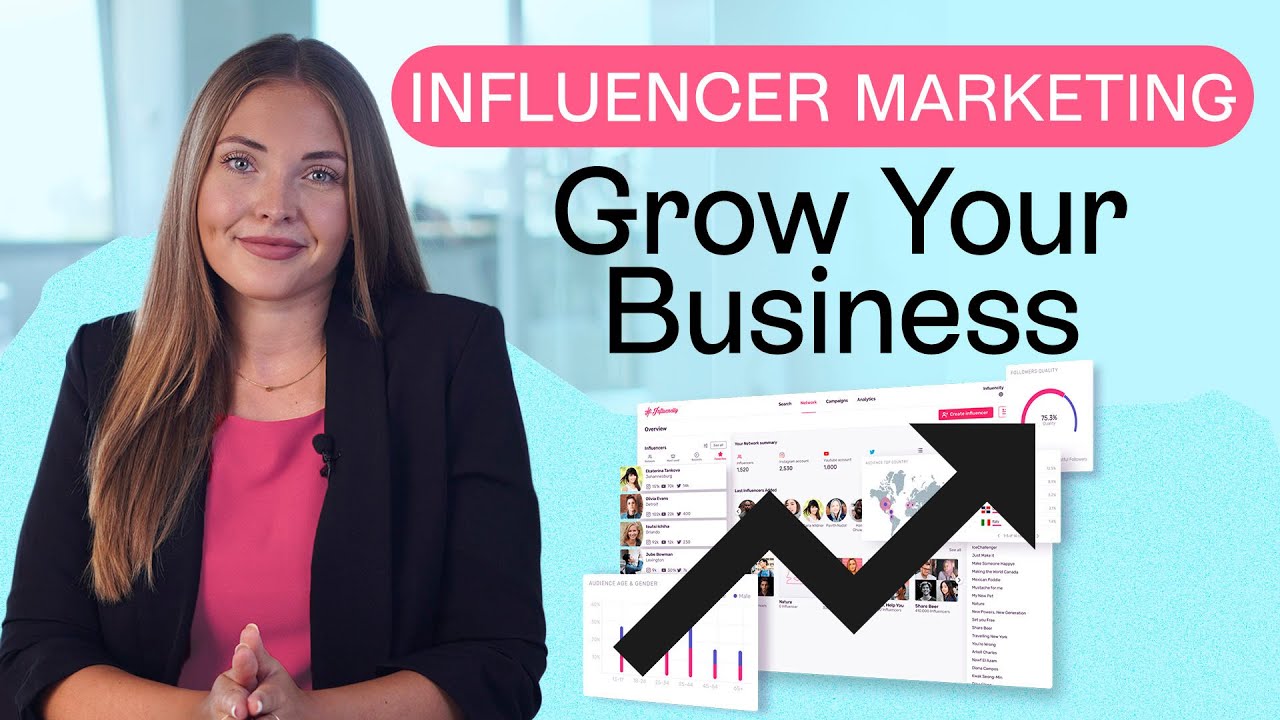In the age of digital marketing, influencer marketing has emerged as a powerful strategy for businesses looking to enhance their brand visibility and drive sales. By leveraging the influence of key individuals who have established credibility and a loyal following in your industry, you can tap into their audience to promote your products or services effectively. In this blog, we’ll explore how to use influencer marketing to grow your business and the steps to create a successful campaign.

Table of Contents
Toggle1. Understand Influencer Marketing
Influencer marketing involves collaborating with individuals who have the power to influence the purchasing decisions of others. These influencers can range from celebrities to micro-influencers with smaller, but highly engaged audiences. Understanding the different types of influencers and their potential impact on your target market is crucial for crafting an effective strategy.
2. Define Your Goals
Before launching an influencer marketing campaign, it’s important to define your goals clearly. Consider what you want to achieve, such as:
- Brand Awareness: Increase visibility and reach within your target market.
- Lead Generation: Attract new customers and build your email list.
- Sales Boost: Drive direct sales and conversions for specific products or services.
- Content Creation: Generate engaging content that you can share across your channels.
Setting specific, measurable goals will help you evaluate the success of your campaign and make informed decisions moving forward.
3. Identify Your Target Audience
Understanding your target audience is key to selecting the right influencers. Consider demographics, interests, behaviors, and pain points. Create audience personas to guide your influencer selection process. The more closely an influencer aligns with your target audience, the more effective your campaign will be.
4. Choose the Right Influencers
When selecting influencers, consider the following factors:
- Relevance: Choose influencers who align with your brand values and niche.
- Engagement: Look for influencers with high engagement rates, as this indicates a loyal and active following.
- Authenticity: Select influencers who are genuine and have a reputation for promoting products they believe in. Authentic endorsements resonate better with audiences.
- Reach: Consider both the size and demographics of an influencer’s audience. Micro-influencers, for example, often have highly engaged followers and can be more cost-effective than celebrities.
5. Develop a Compelling Campaign
Once you’ve chosen your influencers, it’s time to develop a campaign that captures their audience’s attention. Here are some ideas:
- Sponsored Posts: Have influencers create content that features your products or services, whether through Instagram posts, YouTube videos, or blog articles.
- Product Reviews: Send influencers your products for honest reviews and testimonials, which can help build trust with their audience.
- Giveaways and Contests: Collaborate with influencers to host giveaways or contests that encourage audience participation and increase brand visibility.
- Affiliate Programs: Create an affiliate program where influencers earn a commission for every sale generated through their referral links.
6. Establish Clear Guidelines
To ensure your campaign is effective and aligns with your brand, provide influencers with clear guidelines. These may include:
- Brand Messaging: Share your brand’s voice, tone, and key messages.
- Content Format: Specify the type of content you’d like, whether it’s videos, images, or blog posts.
- Hashtags and Tags: Provide relevant hashtags and ensure influencers tag your brand in their posts.
While you should offer guidance, allow influencers creative freedom to present your products authentically to their audience.
7. Track and Measure Results
To assess the effectiveness of your influencer marketing campaign, track key performance indicators (KPIs) such as:
- Engagement Rates: Measure likes, comments, and shares to gauge audience interaction.
- Website Traffic: Monitor traffic to your website or specific landing pages linked in influencer posts.
- Sales Conversions: Use tracking links or promo codes to measure direct sales generated from the campaign.
- Brand Mentions: Keep an eye on social media mentions and sentiment analysis to understand how your brand is perceived.
Analyzing these metrics will help you evaluate your campaign’s success and refine your strategy for future collaborations.
8. Build Long-Term Relationships
Influencer marketing can be more effective when approached as a long-term partnership rather than a one-time collaboration. Building strong relationships with influencers allows for ongoing engagement and more authentic endorsements. Consider:
- Regular Check-Ins: Maintain communication with influencers to discuss upcoming campaigns and feedback.
- Exclusive Offers: Provide influencers with exclusive products or discounts for their audience.
- Feedback Loop: Encourage influencers to share insights about their audience’s responses to your products, allowing you to improve and adapt your offerings.
Conclusion
Influencer marketing can be a game-changer for businesses seeking to expand their reach, build brand loyalty, and drive sales. By understanding your audience, choosing the right influencers, and crafting compelling campaigns, you can effectively leverage influencer partnerships to grow your business. As digital landscapes continue to evolve, embracing influencer marketing as a strategic component of your marketing efforts can set you apart from the competition and pave the way for lasting success. Start exploring influencer marketing today and unlock new opportunities for your brand!


No responses yet